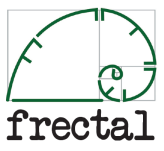Standards and Value …….and a note about “the last mile”
Having begun an exploration in healthcare and moved onto look at the healthcare, management and information technology through the lens of the Cynefin framework.
While it may be an unusual blend of topics for an Emergency Physician to explore, I am only able to do so due to the varied and valuable experience I have had in these fields, primarily within the NHS in England.
As my work has developed standards have become a regular theme and I have been exposed to quite a range to date. They include;
NHS Emergency Care Standard (98% ED arrival to discharge in less than 4 hours)
and more besides…
PRINCE 2- another UK government standardised method for Projects in Controlled Environment
Managing Successful Programme- UK government standard for the management of change programmes across the UK
BPMN- a Business Process Modelling Notation
UML- Unified Modelling Language
Zachman- an enterprise wide information architecture
Royal College of Physicians Clinical Record Keeping Standards
SNOMED CT- Systemised NOmenclature of MED Clinical Terms
openEHR architecture/ISO en13606 Archetype standard
I have already explained that standards can be a key elements in successful change in complex systems. Indeed my experience is that several of these standards have been pivotal in focussing effort and achieving significant change…
However it has also been my experience that the majority of the national/international standards I come across have been/are being designed without any understanding of the nature of complex systems science or the wider interplay between Chaos/Complexity/Complicated/Simple domains that Cynefin explains..
It has therefore been my experience that there is commonly a real gap, between the standards that are being set from on high and the reality on the ground. Of late I have begun to call this gap “the last mile”. That is akin to the challenging “last mile” that the water, gas, postal, electrical and other utility companies struggle with..
The starting point for the introduction of a standard may be within the context of chaotic system where doing anything (e.g. imposing a standard) could/should help to positively disrupt the system.
It is my experience that standards that are imposed from the top down, while usually dabbling into pilot projects to start with, struggle with implementation on an ongoing basis and particularly as they try to scale up.
Quite simply if the standards don’t add value at the frontline they wont be properly used and the nature of complex systems is that folk will find local workarounds..
However if a complex systems view is taken, then a more agile iterative approach to standards development and rollout should take place. This should be a joint affair, facilitated by those in authority with links those innovators at the frontline who are adding value with the introduction of standards.
Furthermore the standard should allow some room for local flexibility within. One related example would be the 4 hour Emergency Care standard of the NHS, where a national 4 hour standard was set from arrival in the ED to discharge in 98% of cases, with plenty of room for local flexibility in terms of how that value was achieved..
So to add value, complex change programmes should set standards to be achieved that allow for local flexibility and related innovation should be fostered from the ground up. This principle should apply to those key people, process, information and technology elements that drive change.
Having explored the principle of harnessing key elements in tackling change amidst complexity, we now return to healthcare, to explore how these principles may be applied..





Leave a comment